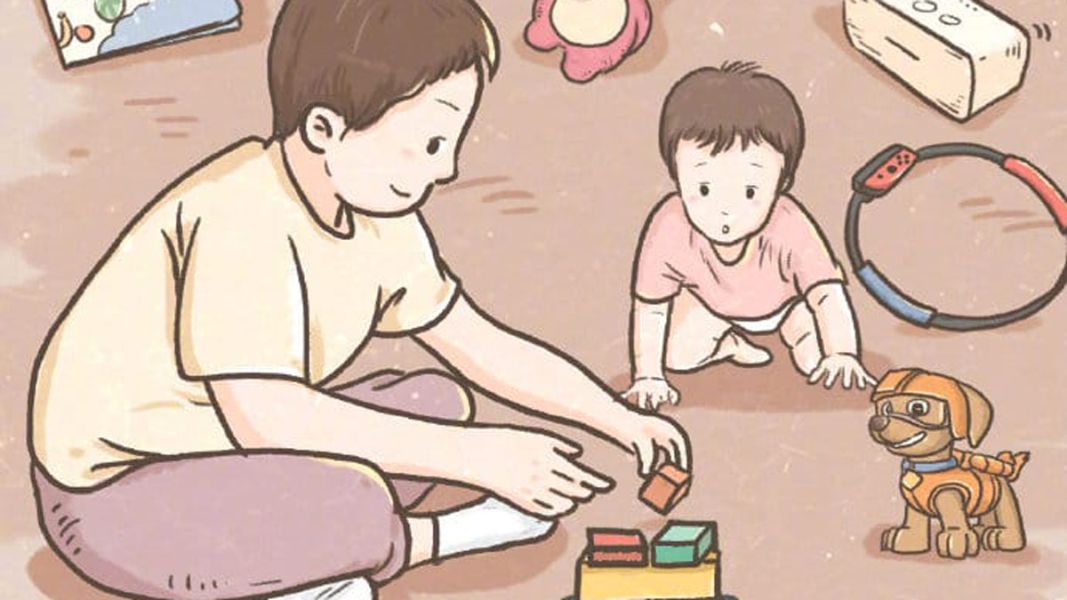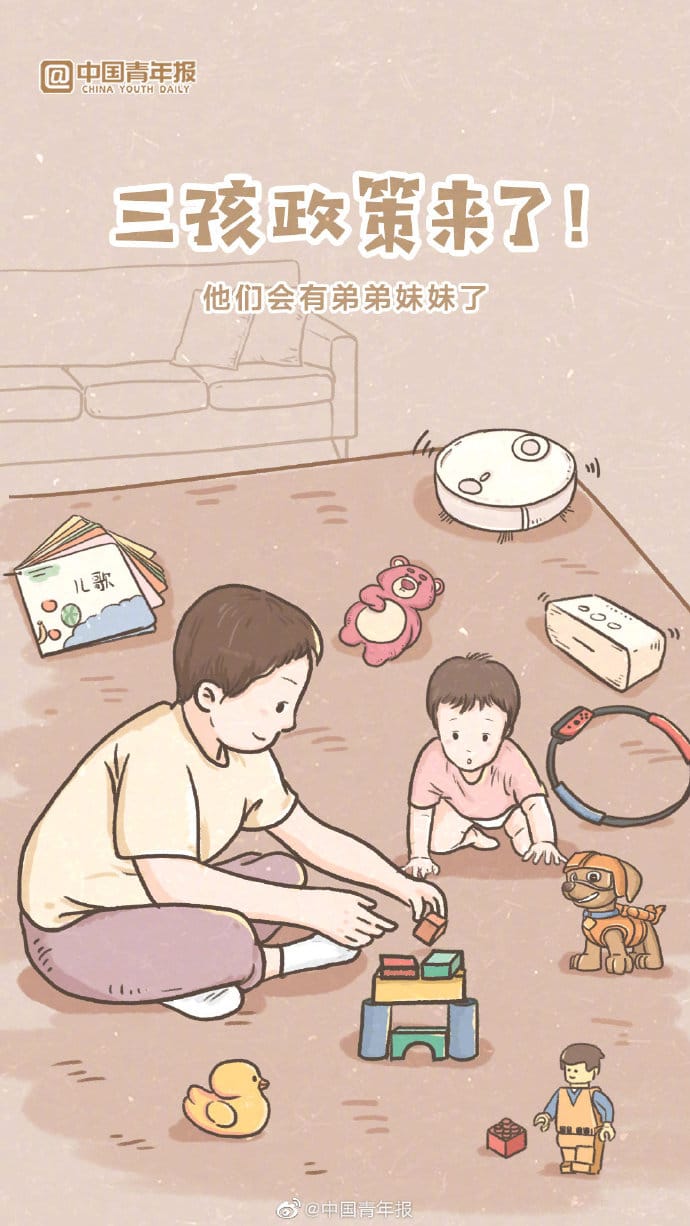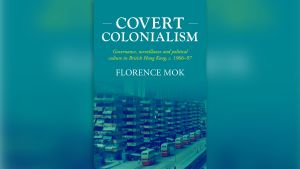
The Biopolitics of the Three-Child Policy
Since the 1980 launch of the One-Child Policy, population has been a fraught domain of Chinese politics. An analysis of Weibo comments suggests that the announcement in the mid-2010s of the Two-Child Policy was met with excitement and hope—a sign that the government had heard the people’s demands and opened the circle of freedom after a long winter of reproductive discontent (Yang et al. 2022). Five years later, the Three-Child Policy (一对夫妻可以生育三个子女政策) came as a gut punch. The public’s concerns had been ignored. It was now clear that, instead of citizens having a voice in their own affairs, the people were merely passive objects of control by an authoritarian government concerned only about aggregate numbers.
Survey after survey has shown little interest in large families among young Chinese. Today, educated young people in the cities value personal growth, self-realisation, and freedom to enjoy life. They want to stabilise their careers before starting a family. They see marriage and childbearing as personal affairs, not matters of state (Wang 2023; Zhou 2018; Fudan Development Institute 2022). With public expression of discontent impossible, complaints and protests have erupted online, where communities of women share their frustrations about sexual abuse in relationships, the impossible costs of raising even one child, rampant gender discrimination at work, and much more (Wu and Dong 2019; Zhang 2023; Xie and Ying 2023).
With the rollout of the Three-Child Policy proceeding slowly and almost invisibly, anxieties have multiplied in private and online spaces. Will the three-child family be a permissible option (可以), as current policy states, or advocated (提倡, a term that can mean both encouraged and demanded, depending on the context), as the one-child and even two-child families were? Memories of state violence during the one-child years have stoked fears about how far the current regime will go in enforcing its reproductive will. In this fog of uncertainty, how can young women (and men) who wish to prioritise their work and self-development respond to this latest move by the Chinese Communist Party (CCP) to intervene deeply in their lives? Writing in this journal, the feminist activist Lü Pin urged passive resistance to the state through refusal to marry and have children (Lü 2023). But can opting out protect the young from the long arm of a powerful state determined to raise the birthrate to allay what it sees as an urgent population crisis preventing the realisation of the China Dream of the great rejuvenation of the Chinese nation?
Existing scholarship on the Three-Child Policy is limited and focused on demographics (Minzner 2022). While that is important work, it misses the larger biopolitical project of which the policy is a part and, in turn, the political stakes involved. Research on the One-Child Policy revealed the analytic productivity of broadly Foucauldian concepts of governance—the steering of conduct by ‘governors’ in the state and beyond—in revealing the larger biopolitical project of subject-making, nation-building, and Party-preserving of which the One-Child Policy was a part (by biopolitics here I mean the field concerning the administration and optimisation of the vital attributes of human life, especially at the aggregate level; for a more detailed discussion, see Greenhalgh and Winckler 2005). The one-child project remade China’s society, creating the highly educated, self-determining post-1980, post-1990, and post-2000 generations of subjects who are contending with the three-child demand today. Such dynamics suggest that we need to talk about this larger project, not just the policy on births that receives all the media attention.
Examining today’s population project through a governance framework, and using the One-Child Policy as a comparative baseline, in this essay, I ask three questions: what are the central authorities doing in the name of ‘population’—that is, what sort of project are they assembling; what is new and significant about it; and what kinds of resistance are possible and, more generally, what does the project mean for state–society relations? The analysis draws on my study of the Two-Child and Three-Child policies through document analysis, review of Chinese social research and social media, and informal conversations, as well as long research on the One-Child Policy. I will argue that in the past 10 years, the regime of President Xi Jinping has undertaken a major, largely uncharted project of reasserting Party-State control over population. The policy on births is only the most visible element of this larger initiative. Arguably bigger in scope than anything undertaken so far, the project’s aim is to engineer a new, stable, and harmonious family-centric society and family-friendly economy that will smooth out demographic irregularities in two main ways: by re-traditionalising family culture and by reconcentrating power over reproduction in the CCP and new or refurbished Party-led institutions and infrastructures.
I contend that the three-child norm is not so much a real aspiration as a signal of this more expansive goal of fixing the nation’s demography by bringing Chinese society, and especially Chinese women, under greater Party control. The fearsome scope of the new project, together with the concentration of power in the Party-State today, makes effective resistance very difficult. Since the state’s population project is a work-in-progress, my aim is to sketch out some of its main features, connecting the available dots into a set of provisional answers to these questions. My hope is to arm young Chinese with knowledge of use in the coming struggles and, more generally, to spark fresh conversations about these vital matters.

A ‘National Crisis’ to Be Eased by Reinventing Neo-Confucian Families
The study of population governance in China starts with an analysis of how the problem and its solution are framed in official discourse. In the 1980s, the state discourse of ‘population crisis’ helped cement public support for the One-Child Policy, and it would come in handy again (Greenhalgh 2008).
Soon after Xi Jinping took the reins of power, the Chinese leadership began addressing the worrying fall in fertility under the late One-Child Policy. In 2015, the state officially ended this policy, introducing a universal Two-Child Policy to take effect in 2016. By the late 2010s and early 2020s, it was clear that the Party-State had lost control not only of the birthrate, but also of many key measures of population health. The number of births per woman was in freefall, sinking to 1.08 in 2022—far below the 2.1 needed to replace the population (Zhai and Jin 2023). Young people raised as little emperors and empresses during the one-child years were revelling in their freedom, pushing the age of first marriage ever closer to 30 and rejecting marriage and reproduction in growing numbers (Du 2023). To the Xi leadership, these demographic realities—ultra-low fertility, rapid ageing, a shrinking labour pool, shifts in family structure—posed major threats to the achievement of critical economic goals.
The state’s response was to bundle all these concerns together and treat them as an urgent, multifaceted population crisis—and especially a birth crisis—that threatened the nation’s prosperity and the realisation of Xi’s signature goal of the China Dream. Party leaders avoided the language of ‘crisis’ in public, but the shockingly rapid decline in the birthrate and their drastic, almost frantic responses (suddenly announcing a Three-Child Policy and eliminating for-profit tutoring virtually overnight) signalled the existence of a crisis in all but official name (Minzner 2022). In his larger program for the country, Xi argued that the nation’s ancient Confucian ideals had made China great in the past and they lived on in the CCP’s plans for national revitalisation (Tsang and Cheung 2024: 86–89). Following that overarching logic, the solution to the population problem was to institute a Three-Child Policy and encourage the formation of large neo-Confucian families to support the young and the old. Other possible solutions to these problems (immigration for elder care, raising the retirement age to increase labour supply) were set aside in an all-hands-on-deck effort to promote three-child families through a broad campaign of ideological education and a set of sweeping socioeconomic incentives and disincentives labelled ‘supporting measures’ (生育支持措施).
The ideological core of what I call China’s ‘project on population for the new era’ is Xi Jinping’s vision for the restoration of a neo-traditional family order rooted in the Confucian fundamentals of hierarchy, respect for the old, women’s responsibility for domestic roles, and harmony among the generations. (I use ‘neo-traditional’ and ‘neo-Confucian’ loosely—and interchangeably—as umbrella terms for the characteristics Xi calls ‘Confucian’.) With several children and a multigenerational structure, these neo-traditional families would be major contributors to solving the nation’s demographic problems, from low fertility and labour shortage to old-age support. Such a development would turn China’s increasingly individualistic society into a more familistic one. Reproductive-age women, who would do the work of biological and social reproduction (childbirth and household labour and care), were to be valorised as good wives and mothers. In this scheme, their identity as independent agents would be subordinated as female identity was subsumed within the construct of the ‘good neo-traditional family’.
The 2021 Central Committee and State Council Decision announcing the Three-Child Policy set out the core cultural themes to be advanced countrywide:
Promote the traditional virtues of the Chinese nation; respect the social value of childbirth; advocate marriage and childbirth at an appropriate age and better childbearing and rearing; encourage couples to share child-rearing responsibilities; break with outdated customs such as exorbitant betrothal gifts; and foster a new culture of marriage and childbearing. (CC&SC 2021: 9)
As Wang Pei’an, Executive Vice-President of the Party-led Birth Planning Association (BPA), explained: ‘This is a systematic and comprehensive interpretation of the marriage and childbearing culture in the new era’ (Wang 2023: 4, emphasis added). These familistic themes would form the ideological centrepiece of the three-child campaign.
The Party began propagandising the purported personal and national benefits of China’s traditional family culture long before it launched the Three-Child Policy. Early in his tenure as Party chief, President Xi began calling for a revival of ‘glorious Chinese traditions’ and honouring women’s roles as ‘good wives and mothers’ (贤妻良母) (Xi 2021: 9; Xiao 2022). Xi’s statement on the ‘Three Irreplaceables’ (三个不可替代) affirmed the unique role of women as the pivot of the family, which in turn plays a unique role as the basic cell of society and building block of national stability (Xi 2021). Nationwide publicity campaigns such as the poster collection ‘Visualising Our Values’ and the CCTV ad ‘China-Dream Child’ (中国梦娃) launched in 2013–14 have popularised not only the so-called core socialist values, but also a set of family values upholding the Confucian ideals of patriarchal authority, nation-family (家国), filial piety, unquestioned gender roles, and harmony (Miao 2021). Romanticised images of respectful children, self-sacrificing mothers, and other filial versions of the good citizen have served to illustrate the correct solution to the crises of sagging fertility and lack of old-age care. For a decade now, such images, which seamlessly reframe public issues as personal ones, have been a ubiquitous part of the public sphere in rural and urban China, permeating ordinary people’s everyday lives (Miao 2021).
Agents of Population Governance: Co-Governance by Government, Society, and Citizens
Governance requires ‘governors’ to steer citizens’ conduct along correct lines. The One-Child Policy sought to prevent births primarily through the exercise of Party-State power. The official governors of population were the birth planning agencies of the Party-State, as well as the Party-led mass organisations (the All-China Women’s Federation, trade unions, Communist Youth League). Other, nonstate agents—professionals, parents, and children as governors of themselves—were called on to raise population quality (素质) but they had no official role in population governance (Greenhalgh and Winckler 2005).
Now, to stimulate second and third births in a society that favours one or two, the state has ordered a national mobilisation of all social forces, along with a strengthened collaboration between government (here meaning the state administration) and society (NHC 2022: 5, item 20). The Three-Child Policy has not only placed responsibility on the entire governing apparatus, the mass organisations, and the BPA; it has also expanded the array of governors to include the heads of organisations in more than a dozen fields—culture workers, employers (state and private sectors), educators, healthcare providers, heads of public interest and social organisations, families, and individuals (again, as self-governors)—assigning each specific duties under the direction of the CCP (CC&SC 2021; NHC 2022). This represents a profound shift in the way China has governed its population. In the words of the 2015 Decision on the Two-Child Policy, it is a shift ‘from relying mainly on government power to co-governance by the government, society, and citizens’ (CC&SC 2015: 3, emphasis added). With the government outsourcing to other parts of society much of the difficult work of raising the birthrate, those on the receiving end of all the pressure from employers, parents, healthcare providers, and so forth—young women—are likely to find it harder than ever to escape the net of surveillance and control.
As it was under the One-Child Policy, successful implementation of the Three-Child Policy and supporting measures is to be ensured by strengthening Party leadership. Party committees and governments at all levels are instructed to place population work on the agenda of important matters; ensure top leaders personally take charge and implement the (cadre) target responsibility system; and provide annual updates to the Central Committee and State Council (CC&SC 2021: 8, 9; NHC 2022: 5). Like other policy issues, population is a Party-State matter to be enforced by all means available—a stark reminder to citizens that reproduction is not personal, but political through and through.
A Comprehensive Social Infrastructure to Promote Births
How, then, should these governors boost the birthrate? This question of implementation occupies most of the space in the official documents on the Three-Child Policy. The 2021 decision identifies three concrete obstacles to raising the birthrate, then sets out detailed, multidimensional solutions to each (CC&SC 2021). These are the astronomical cost of childrearing, the heavy childcare and education responsibilities faced by parents, and the difficulties women face combining work and family—precisely the obstacles young Chinese themselves cite.
The governors identified above are called on to create (or improve) multiple interlinked birth-enabling ‘systems’ that, working together, should help overcome the obstacles to higher-order childbearing, while achieving the state’s many other population goals (in health, quality, and so on). Stepping back from the astonishing scope and exhaustive detail in the documents, what we see here is an effort to build a comprehensive social infrastructure comprising a family-centric society and a family-friendly economy and social service sector (health, education, infant and elder care) to raise the birthrate while optimising childbirth, child care, education, and elder care. The 2021 decision uses the term ‘system’ loosely and liberally, mentioning it more than 30 times. Among the more overarching systems are:
- a population service system that covers not just reproduction, as under the One-Child Policy, but the entire life cycle, with a focus on the elderly and the young
- a fertility support system that uses government finance, tax collection, insurance, education, employment, and housing measures to stimulate childbearing and ensure the quality of services for childbearing and rearing
- a birth-friendly working environment that offers mothers flexible work schedules, generous maternity leave, improved maternity insurance systems, and re-employment training after childbirth; and safeguards women’s legal rights and interests in employment
- an inclusive childcare service system that vastly increases the quantity and quality of childcare services
- a population monitoring system that covers the entire population over the whole life cycle, and integrates information on population with that on education, public security, civil affairs, health, medical insurance, and social security. (CC&SC 2021; NHC 2022)
This list of infrastructure projects can be read as a masterplan that hints at a larger program the leadership has in mind. How much of this is accomplished will depend on political and economic matters (for instance, how much pressure the centre exerts, how much funding is allocated), which will change with the circumstances in which the Party-State finds itself.
The One-Child Policy sought to manage just two things: the number and the quality of children. As this list of systems suggests, the Three-Child Policy has a much larger set of goals for optimising the population (Xinhua 2021: Article 2, para. 2). This expanded array of concerns managed under the rubric of ‘population’, as well as the construction of the enabling systems (especially [b]–[d]), are mandated by the Population and Birth Planning Law amended in 2021, giving an already powerful state additional legal backing for enforcing its reproductive will (Xinhua 2021).
The political stakes here need underscoring. With the construction of this comprehensive social infrastructure, the scope for state surveillance of and intervention in family life has vastly increased. In the name of easing a multifaceted population crisis, even if only partly enacted, these systems and measures would extend the reach of government into virtually all domains of everyday life and manage individual conduct from cradle to grave, shrinking the space for individual autonomous action.
The implications for women and gender relations are equally concerning, if not more so. These have been spelled out with clarity by the feminist scholar Angela Xiao Wu. Instead of addressing the gender inequalities that largely produced the low birthrate in the first place, the new social and family infrastructure ‘essentially extracts unpaid, highly gendered labour to smooth [out] the country’s coming economic challenges’ (Wu, Email, 25 May 2024). Rather than changing discriminatory institutions, the CCP has opted to double down and strengthen them. This is likely to produce anger if not outrage among the many Chinese women who, especially in the past five years, have developed a heightened awareness of the gender disparities at the foundation of China’s society. In Wu’s words:
Against this expansive awareness … any beneficial measures aimed at [the] family as a unit will have limited appeal to, if not [be] viewed [as] outright insidious by, women themselves who are [already] shouldering most of the work within the family.
Implementation to Date
Clearly, enforcing the Three-Child Policy and its myriad supportive measures involves an ambitious agenda of changes that will take years to put in place, and more years still to produce effects. Nonetheless, by mining the media and social research, we can see some of the important actions now under way. The state has led with broad initiatives to instil new norms by creating a public culture celebrating and normalising larger families with two or three children (Qian and Robles 2024). While official street banners have declared the benefits of three-child families, CCTV has run public service ads featuring happy multigenerational families feasting together at Chinese New Year. Subtle reminders of official support for more traditional families have begun to appear in unexpected places. In late 2023, for example, a sculpture of a one-child family that had long adorned the riverbank in Wuhan suddenly had three children (He and Lü 2024). For many young people, these everyday reminders of the state’s desire for multi-child, multigenerational families are being internalised as societal pressure to conform to the new norm (He and Lü 2024; Qian and Robles 2024).
Tapped to take the lead in spreading the ‘culture of marriage and childbearing for the new era’, the Party-led BPA in 2022–23 launched pilot projects in 40 cities to spread public awareness of the newly prioritised family values. Innovative events such as beauty contests for pregnant women have drawn attention to the BPA’s work. The All-China Women’s Federation—once charged with advancing women’s interests—has been brought under tighter Party control and tasked with actively supporting the policy by spreading Xi Jinping Thought on family values and encouraging women to take on traditional maternal and caregiver roles (Zhou 2019, 2023). With two nationwide mass organisations pressing the cause, it would be hard for citizens to miss the message about the politically proper family today.
After propagandising the public, the next step is to introduce concrete measures to spark the desired changes. Like the One-Child Policy in 1980, the Three-Child Policy today is being rolled out in stages, starting with target populations most likely to comply (Greenhalgh and Winckler 2005: 105). In September 2023, Xi Jinping, as Chairman of the Central Military Commission, signed an executive order charging the armed forces with taking the lead in carrying out the amended population law (Liu 2023; People’s Daily 2023). The measures, to be enforced immediately, included 33 provisions that urge military couples to do their patriotic duty by marrying and having children ‘at the right ages’ and considering having three. Assuming the campaign takes root among the troops, we can expect another sector of society to be targeted soon.
For the general (civilian) public, media reports reveal piecemeal introduction of supportive measures in various localities. Among the more common inducements are matchmaking events, cash awards for those marrying ‘at the right age’, group weddings to curb ‘exorbitant bride prices’, childbirth allowances, childrearing subsidies, paternity leave, and income tax deductions for expenses related to caring for children under three (Wang 2023; Master 2023; Global Times 2023; Global Times Staff 2023). Some localities have pushed enforcement in the direction of hard (more forceful) birth planning, effectively closing off avenues of resistance. Tactics include refusing young men’s requests for vasectomies, forbidding illegal (such as gender-selective) abortions, and maintaining a 30-day pre-divorce waiting period that strongly discourages marital breakups (Chen et al. 2021; Davidson 2021; CC&SC 2021). We can expect rapid growth in the number and variety of such measures over the next few years.
What Forms of Resistance Are Possible? What is Ultimately at Stake?
There is no doubt that China’s leaders are serious about creating a more family-oriented society in which social welfare tasks (child care, elder care) that ideally would be handled by the state are being offloaded to the family, and especially women, to accomplish. In this government-with-society initiative, all named parties are responsible for doing their part, and all owe allegiance to the CCP. Today enforcement appears to be proceeding slowly, as leaders continue to monitor public reactions. Reading the policy documents, though, we can discern potential for the resort to heavy-handed, probably technology-assisted, control. For example, it is a small step from stating, as the population law now does, that marriage and births should happen ‘at the appropriate age’ (适龄) to specifying the (younger) ages and using administrative tools to steer people to marrying and having children at those ages. Similarly, it would be fairly easy for the state to use its control over coveted public sector jobs as leverage in gradually gaining compliance.
The same goes for birth control. For example, unmarried couples now rely primarily on condoms, withdrawal, and the rhythm method (in that order) to avoid unwanted pregnancies (Wang et al. 2020). The high failure rate of these methods means that young and unmarried women, who are denied access to the reproductive services married women enjoy, have little choice but to use abortion, including repeat abortions, as a principal method of averting births. Simply restricting access to abortion—which has already begun in the name of ‘limiting illegal abortions’—would force young, unmarried people to have children they do not want (Lau 2022). Such use of state-controlled resources and services to steer reproduction was everyday practice during the one-child era, and it is part of the modus operandi of the supporting measures that accompany today’s policy.
What will happen when the state extends enforcement beyond the armed forces to sectors of society where the policy is deeply unpopular? How will Chinese feminists and other freedom-seeking young people respond when the pressures on them begin to grow? Will they be able to resist pronatalist and familist pressures from the state and perhaps also older family members who have effectively allied with the state to promote ‘entrenched patriarchal family demands’ (Singh and Zhou 2023: 34)? What form might that resistance take? The journalist and sociologist Leta Hong Fincher (2023) foresees a coming clash over reproductive control, in which excessively tough measures introduced by the CCP could provoke active protests and even uprisings, effectively constraining the Party’s options. Is such a clash likely? If today young women have no voice in the public sphere, no way to engage in advocacy (Lü Pin 2021–22), will they go into the streets, risking arrest and jail time, to engage in protests and uprisings against the Three-Child Policy? No-one can say, but after the 2015 lock-up of the Feminist Five, they are likely to exercise caution.
Open protest aside, what other forms might resistance take? Under the One-Child Policy, resistance was fierce but unorganised. Couples defied the policy largely on their own by concealing pregnancies, escaping to distant villages, bribing local cadres, and so forth. We can expect a similarly atomised resistance now, but on a new, more sophisticated level, enabled by the wealth and savvy of many young Chinese. Informal conversations suggest that for those with means, emigration is an option, and unknown numbers are taking it right now.
Young women (and men) may demand a voice in their reproductive decisions, but numerous factors are likely to work against successful large-scale opposition. Political realities present a major barrier. In the past decade, President Xi has concentrated unprecedented power in the Party and strengthened its control over society (Huang 2023). The Party-State controls highly effective tools of mass intervention, from administrative, financial, and personnel-related, to intrusive forms of digital surveillance and discipline that were not available in the age of one-child families (Pei 2024). The Party-State has the population law on its side. Xi’s Party has silenced not only the Women’s Federation but also virtually all critical voices—nongovernmental organisations, a relatively free press, public interest lawyers, critical intellectuals—depriving citizens wanting a different fertility policy of organised groups who might support them. The protesters are left isolated, with only short-lived online communities and a few feminist spaces in some cities to look to for ideas and support (Stevenson 2024).
Reflecting the nation’s long tradition of paternalistic governance, in survey after survey, Chinese overwhelmingly support their government, regardless of its actions and their own grievances. In the most recent World Values Survey (conducted before the Covid pandemic), 94.6 per cent of Chinese questioned said they had significant confidence in their government (World Values Survey n.d.; Huang 2023: 110–17). Will the young eventually succumb to pronatalist pressures and have more children than they want? Given the balance of power in Xi’s China, and the desires of many older relatives, that may be more likely than an open clash.
The Three-Child Policy and the larger population project to which it belongs may have little short-term or mid-term impact on the birthrate, but that does not mean we should dismiss the policy as irrelevant, useless, or misconceived, as some have done. For what is at stake here is not so much the fertility rate as progress in realising the Party’s vision of a society that is less individualistic and more amendable to Party discipline and demands. On this, nine years of the Two-Child and Three-Child policies have already made significant gains. In the process of gradually implementing these policies and supporting measures, the state has defined a set of fundamentally economic problems as demographic ones in good part solvable by ‘the traditional family’, spread an ideology of Confucian familism, mobilised large sectors of society to actively promote the new agenda, and placed the responsibility on women to (once again) save the nation by putting their own ambitions behind those of their country as defined by its leaders.
Like its famous predecessor, the Three-Child Policy will have unintended effects. The One-Child Policy touched every Chinese and produced vast, often wrenching changes in society, culture, and politics. Depending on how hard the state is willing to push—how much it is ready to invest in incentives, how prepared it is to resort to heavy-handed measures—the Three-Child Policy and the politics it has begun to unleash could remake China in ways we can scarcely imagine today.
Acknowledgements
A big thank you to James Flowers, Daria Savchenko, Angela Xiao Wu, and two members of the Made in China Journal Editorial Board for their insightful comments on an earlier draft of this article.
References





